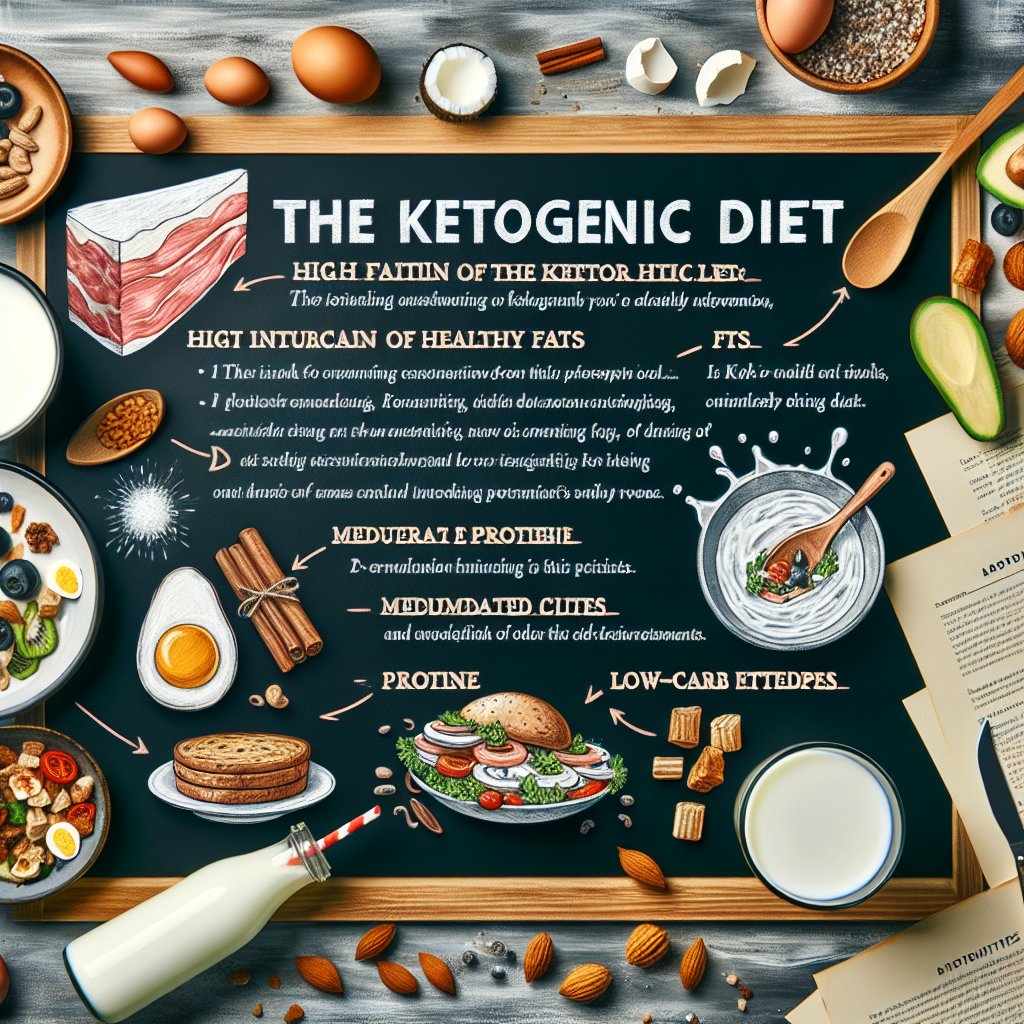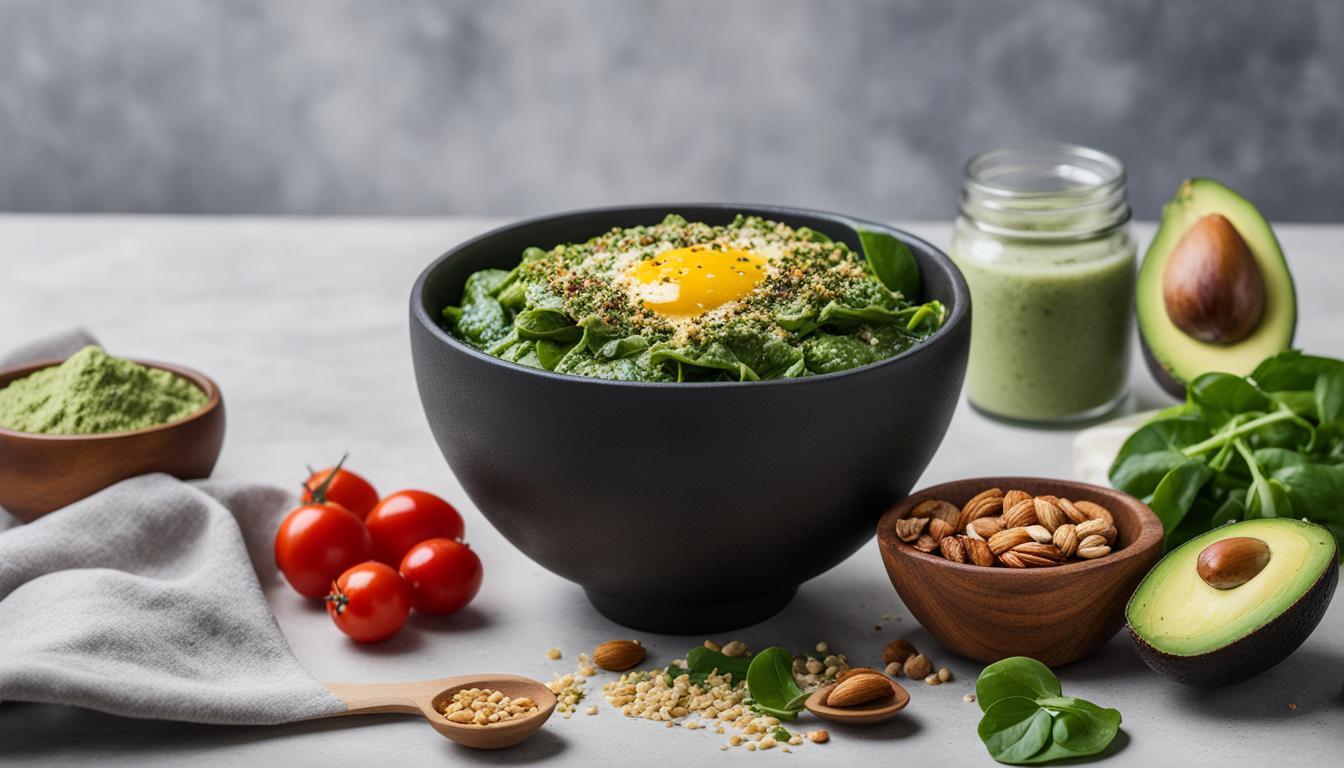Can You Have Skim Milk on Keto? Exploring the Impact, Alternatives, and Delicious Recipes!
Understanding the Ketogenic Diet: High Fat, Moderate Protein, and Low Carb Intake
Hey there, all you lovely keto enthusiasts! Today, we’re delving into the world of the ketogenic diet – a lifestyle that has been gaining massive popularity in recent years. So, what’s all the fuss about? Well, the ketogenic diet, or keto diet for short, is all about embracing a high-fat, moderate-protein, and low-carbohydrate regimen. It’s not just any diet; it’s a complete lifestyle shift that has been scientifically proven to have numerous health benefits.
Now, when we say high-fat, we’re not talking about just any fats – we’re talking about healthy fats, such as avocados, nuts, seeds, and olive oil. These fats become the primary source of energy for your body when you’re on keto. Similarly, moderate protein intake is essential for maintaining muscle mass and other bodily functions while ensuring that excess protein doesn’t get converted into glucose. And of course, the low-carb aspect involves minimizing your carb intake to induce a natural metabolic state known as ketosis, where your body becomes incredibly efficient at burning fat for energy.
The Popularity of the Keto Diet
It’s no secret that the keto diet has taken the health and wellness world by storm. From sensational weight loss stories to remarkable improvements in energy levels and mental clarity, the keto diet has been a game-changer for countless individuals. This surge in popularity has prompted many to explore the potential benefits of this particular way of eating.
Understanding Permissible Foods on Keto
One of the most crucial aspects of starting a keto lifestyle is understanding which foods are permissible on this diet. It’s not just about slashing carbs; it’s about making smart, informed choices about the foods you consume. Embracing nutrient-dense, whole foods is key, and this means enjoying an array of delicious, keto-friendly options such as leafy greens, low-carb vegetables, high-quality meats, fish, eggs, and natural fats like butter and coconut oil.

Skim Milk on Keto Diet
Skim milk is a popular choice for many people looking to reduce fat and calorie intake. But how does it fit into a keto diet? Let’s explore the carb content of skim milk and its impact on ketosis.
Carb Content
Skim milk typically contains around 12 grams of carbs per one cup (240 ml). While this may seem high for a keto diet, it can still fit into your daily carb allowance if consumed in moderation.
Benefits of Consuming Skim Milk on a Keto Diet
Skim milk is a good source of high-quality protein, essential vitamins such as vitamin D and calcium, and several B vitamins. These nutrients play a crucial role in maintaining overall health, which is essential for anyone following a keto diet.
Moreover, the protein content in skim milk can contribute to a feeling of fullness, potentially helping to reduce overall calorie intake.
Drawbacks of Consuming Skim Milk on a Keto Diet
While skim milk offers valuable nutrients, it’s important to note that the carb content of skim milk can impact ketosis, the metabolic state where the body primarily burns fat for fuel. Consuming too many carbs, including those from skim milk, may hinder the process of reaching or maintaining ketosis.
Nutritional Value and Ketosis
Each body reacts differently to the consumption of skim milk. For some individuals, the carb content in skim milk might not significantly affect ketosis, especially if it’s factored into their daily carb allowance and consumed in moderation.
However, it’s essential to monitor your body’s response to skim milk consumption to ensure it doesn’t hinder your progress on the keto diet.
Keep in mind that if you choose to include skim milk in your keto meal plan, it’s crucial to balance your overall daily carb intake from other sources to stay within the recommended carb limits for ketosis.
Additionally, consider opting for organic or grass-fed skim milk when possible, as it may contain higher levels of omega-3 fatty acids and other beneficial nutrients.
Ultimately, it’s essential to approach the consumption of skim milk on a keto diet with mindfulness and moderation to make informed decisions that support your health and wellness goals.
Alternatives to Skim Milk on Keto
When it comes to the ketogenic diet, many individuals question whether skim milk is a suitable option due to its higher carbohydrate content. The good news is that there are several alternative milk options that are not only delicious but also more suitable for the keto lifestyle. Let’s explore the nutritional profiles of almond milk, coconut milk, and hemp milk compared to skim milk to help you make informed choices.
Almond Milk
Almond milk has gained significant popularity, especially among those following a keto diet. It is low in carbs and calories, making it an excellent alternative to skim milk. A one-cup serving of unsweetened almond milk contains only about 1-2 grams of carbohydrates, making it a keto-friendly choice. Additionally, almond milk is rich in vitamin E, which is a powerful antioxidant that supports skin health and provides essential nutrients without the added sugars found in skim milk. It’s important to opt for unsweetened almond milk to avoid any hidden sugars that may impact ketosis.
Coconut Milk
For individuals on the keto diet, coconut milk is another fantastic alternative to skim milk. It contains a high percentage of healthy saturated fats, which can be beneficial for those following a low-carb, high-fat diet. A one-cup serving of canned coconut milk contains around 3 grams of carbohydrates, making it a suitable option for keto followers. Furthermore, coconut milk is also rich in lauric acid, a type of medium-chain triglyceride (MCT) that can be quickly converted into ketones to provide energy for the body.
Hemp Milk
Hemp milk, derived from the seeds of the hemp plant, is a lesser-known but equally valuable alternative to skim milk on the keto diet. It is a great source of plant-based protein and healthy fats, with approximately 1 gram of net carbs per one-cup serving. Hemp milk also provides a good balance of omega-3 and omega-6 fatty acids, contributing to overall heart health and inflammation reduction. It’s important to choose unsweetened hemp milk to ensure it aligns with the principles of the ketogenic diet.
As we compare these alternative milk options to skim milk, it becomes evident that they provide valuable nutritional benefits while being more compatible with the ketogenic lifestyle. Making the switch to almond, coconut, or hemp milk can offer variety and versatility in your keto journey while supporting your health and wellness goals.

Recipes Incorporating Skim Milk on Keto
So, now that we’ve established that skim milk can be included in the keto diet, let’s get cooking! Skim milk is a versatile ingredient that can be incorporated into a variety of keto-friendly dishes, adding creaminess and flavor without going overboard on carbs. Here are some creative and delicious ways to use skim milk in your keto recipes while staying within the macronutrient requirements of the diet.
Keto-Friendly Skim Milk Panna Cotta
One delightful way to enjoy skim milk on keto is by preparing a luscious panna cotta. This Italian dessert can be easily modified to fit your low-carb lifestyle. Start by blooming sugar-free gelatin in a small amount of warm water. In a saucepan, gently heat skim milk, a keto-friendly sweetener, and a splash of vanilla extract. Once the milk is warm, remove it from the heat, add the bloomed gelatin, and stir until fully dissolved. Pour the mixture into ramekins, chill until set, and serve with fresh berries for a delightful keto dessert that makes the most of skim milk’s creamy goodness.
Keto-Friendly Creamy Alfredo Sauce
Who doesn’t love a comforting plate of fettuccine alfredo? Good news – you can enjoy a keto-friendly version of this classic dish by using skim milk in the creamy alfredo sauce. To make the sauce, start by melting butter in a saucepan over low heat. Add minced garlic and cook until fragrant. Next, pour in the skim milk, heavy cream, and grated parmesan cheese. Stir the mixture until the cheese is fully melted and the sauce is smooth and creamy. Toss it with zucchini noodles or shirataki fettuccine for a satisfying low-carb meal that doesn’t skimp on flavor.
Keto-Friendly Skim Milk Smoothie
Looking for a quick and easy way to incorporate skim milk into your keto routine? Try blending it into a delicious and nutritious smoothie. Combine skim milk, a handful of spinach, a scoop of low-carb protein powder, and a few ice cubes in a blender. Blend until smooth, and enjoy a creamy green smoothie packed with essential nutrients and a dose of healthy fats from the protein powder. This makes for a great on-the-go breakfast or post-workout refuel.
These recipes showcase just a few of the many ways you can integrate skim milk into your keto lifestyle while maintaining the macronutrient balance required for ketosis. With some creativity and a willingness to experiment in the kitchen, you can savor the creamy goodness of skim milk while reaping the benefits of the keto diet.
Final Thoughts
After exploring the impact, alternatives, and delicious recipes related to having skim milk on a keto diet, it’s clear that informed decision-making is key. While skim milk can be included in a keto diet due to its low carbohydrate content, it’s essential to be mindful of portion sizes to avoid consuming too many carbs. Additionally, individual responses to dairy products can vary, so it’s important to pay attention to how your body reacts to including skim milk in your diet.
Consulting with a healthcare professional or a nutritionist can provide personalized guidance on whether skim milk is a suitable choice for your keto diet. They can offer tailored advice based on your overall health, dietary preferences, and weight management goals. Considering your specific health and nutritional needs is crucial in making informed decisions about the foods you include in your ketogenic lifestyle.
It’s important to remember that while skim milk can be a part of your keto journey, it’s not the only option. Exploring various alternatives such as unsweetened almond milk, coconut milk, or macadamia milk can add diversity to your diet while still adhering to keto principles. These alternatives also offer their own nutritional advantages that can complement a well-rounded ketogenic eating plan.
Seeking Balance
As with any dietary choice, moderation and balance are essential. While skim milk can be enjoyed in moderation on a keto diet, it’s crucial to pair it with a diverse range of nutrient-dense foods to ensure you’re meeting all your nutritional needs. Including a variety of healthy fats, high-quality proteins, and low-carb vegetables can create a well-rounded approach to your ketogenic lifestyle.
Ultimately, the decision to include skim milk in your keto diet should align with your individual health goals and preferences. With an informed and balanced approach, you can navigate the impact of skim milk on your ketogenic journey while savoring the delicious recipes that enrich your culinary experiences.


